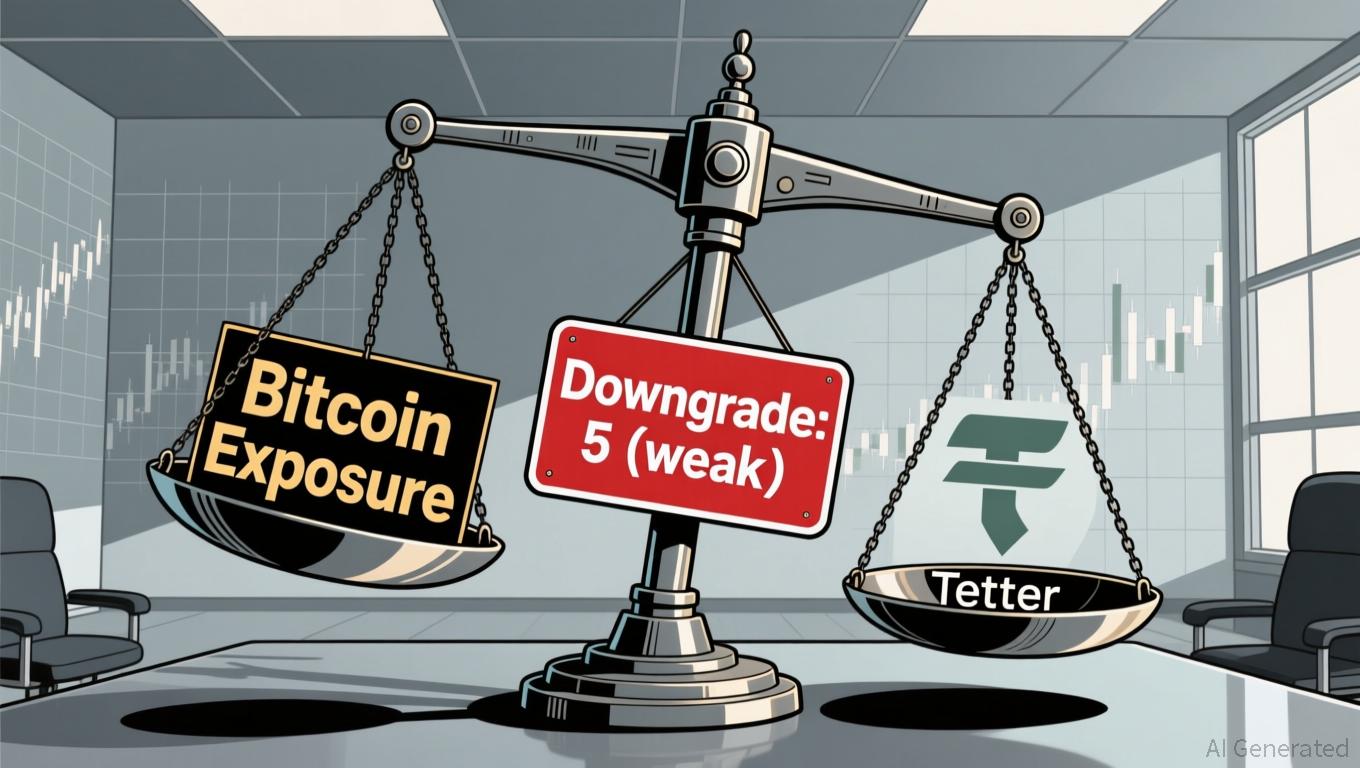Tether's
USDT
, the largest stablecoin globally, has been assigned S&P Global's lowest rating of "5 (weak)", highlighting increasing concerns about the makeup and openness of its reserves.
The ratings agency pointed to
a rise in riskier assets within Tether's holdings—including
Bitcoin
, gold, secured loans, and corporate bonds—and ongoing shortcomings in transparency as main reasons for the downgrade. This is a notable change from its earlier "4 (constrained)" rating,
highlighting worries
that Tether's reliance on volatile or hard-to-sell assets could threaten its ability to keep its value tied to the U.S. dollar.
This downgrade comes as
Tether
encounters wider operational hurdles. The company, which claims to have $184 billion USDT in circulation, has increased its Bitcoin holdings, with the cryptocurrency now making up 5.6% of its reserves—
surpassing
the 3.9% overcollateralization threshold set by S&P analysts. According to them, this situation could leave the stablecoin undercollateralized if Bitcoin's price drops further, potentially putting its peg at risk. Tether, on the other hand,
has stood by its approach
, pointing to independent quarterly attestations since 2021 and asserting it has always honored redemption requests from verified users.
Tether's latest financial activities also demonstrate its shifting tactics. In November, the company resumed purchasing shares in Bitdeer—a Bitcoin mining firm now pivoting to AI—buying 1.89 million shares on the open market after previously selling 7.7 million shares for $166 million
in a decision
that stands in contrast to Bitdeer's recent difficulties, including a $266.7 million net loss in the third quarter and setbacks in launching its SEAL04 miner due to technical issues. Tether's investment is part of a broader trend of crypto companies adapting to worsening mining profitability,
as the Bitcoin mining industry
has seen $32 billion wiped from its market value since October.
The downgrade and changes in operations have wider consequences for the stablecoin sector, which has experienced instability before. In 2023, Circle's
USDC
briefly dropped to 87 cents per coin after news of its exposure to Silicon Valley Bank, while Terra's UST collapsed in 2022, erasing $40 billion in value.
S&P analysts observed
that Tether's lack of clarity regarding custodians, partners, and redemption mechanisms heightens these risks. Despite these issues, Tether
announced a $10 billion profit
in 2025, with CEO Paolo Ardoino dismissing the downgrade as a result of "outdated rating models" that don't fit digital assets.
The company's ability to withstand crypto market upheavals—such as remaining stable during the 2022 crisis—has strengthened its standing, but S&P's evaluation marks a pivotal moment. As institutional players pay closer attention to stablecoin reserves, Tether's challenge will be to manage its growth in higher-risk assets while maintaining transparency, which will be crucial for preserving its lead in the $184 billion stablecoin market.
